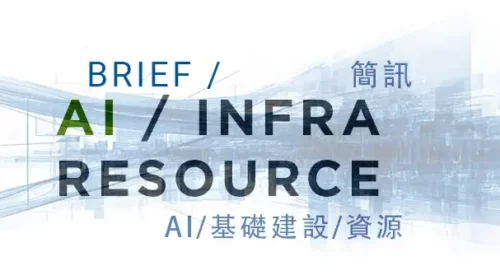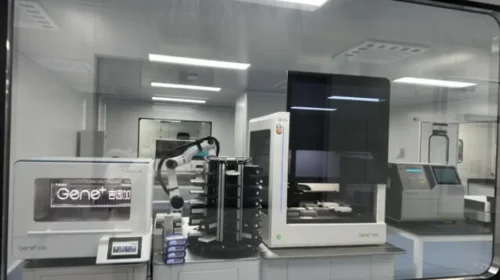Huishang Bank’s double-speak: Talking up profits, while highlighting challenges

The regional lender’s net profit increased 3.8% in the first half of 2025, far less than its asset expansion, suggesting intense margin pressure
Key Takeaways:
- Huishang Bank’s total assets increased about 17% by the end of June from a year earlier, but its operating income grew only 2.2%, with its net profit up 3.8%
- Chinese banks have been battling pressure on their margins caused by central bank interest rate cuts to stimulate the economy
By Warren Yang
Chinese banks won’t wow anyone these days with stellar financials, no matter how they try to spin things, as China’s prolonged economic slowdown creates headaches for the sector on multiple fronts. A case in point is Huishang Bank Corp. Ltd. (3698.HK), a major regional lender based in East China’s Anhui province. The bank tried to hype up its latest profit growth in a positive profit alertlast Friday, but the many problems making life difficult for itself and its peers across China remain unfixed.
The alert gave investors a sneak preview of Huishang’s financial results for the first half of 2025 — enticing them with the word “positive,” as if to woo them with news of big profit gains.
However, anyone who read the announcement would have probably been disappointed. Granted, the regional bank’s total assets, consisting largely of loans, increased about 12% in the six months to the end of June from the start of the year. On a year-on-year basis, the figure grew about 17%, indicating that its main lending business expanded briskly. Yet the bank’s operating income in the six-month period, primarily from loan interest, increased only 2.2% year-on-year to 21 billion yuan ($2.9 billion), with its net profit rising by only a slightly higher 3.8% to 9.3 billion yuan.
Huishang described its first-half results in some flowery language, attributing “the positive performance” to “always adhering to the origins of finance, sparing no efforts in serving the real economy” and a long list of other self-aggrandizing achievements.
Regardless, the huge gap between the bank’s asset expansion and its profit growth suggests that margins on its loans are under a lot of pressure as China’s central bank resorts to interest rate cuts to stimulate the economy.
Huishang certainly isn’t alone in facing this problem. Chinese banks’ net interest margins (NIMs), the difference between their interest income and deposit costs, have been declining across the board for quite some time now. In theory, when interest rates go down, banks ought to be able to pay less for deposits, which should keep their NIMs steady. But other factors affect that dynamic, and competition among lenders is a big one.
When economic conditions aren’t so great, demand for loans tends to weaken, and that ratchets up competition among banks. To attract more borrowers, especially those with good financial health, banks lower their loan interest rates, to the detriment of their margins. Competition has become a greater factor for Chinese banks since 2019, the last year before the pandemic. At that time, regulators introduced a system to align loan rates more closely with market demand.
Huishang’s NIM declined by 0.17 percentage points to 1.71% last year from 2023. The figure was as high as 2.51% back in 2019, which shows that the lender has been battling pretty bad margin deterioration for years.
Margins aren’t the only concern for Chinese lenders these days. Managing risks becomes tricky for banks at times like this as more borrowers experiencing economic hardships may default on their loans. On this front, Huishang Bank, which says it’s the largest urban commercial bank in Central China, appears to be faring better than its smaller peers.
The bank’s nonperforming loan (NPL) ratio was only 0.98% at the end of June, essentially unchanged from the end of last year. By comparison, the metric for Yibin City Commercial Bank Co. Ltd. (2596.HK), which is about half the size of Huishang in terms of total assets, stood at 1.68% at the end of last year, even after decreases in prior years. Luzhou Bank Co. Ltd.’s (1983.HK) NPL ratio was 1.19%.
The scale of Huishang Bank, which was created through a merger of a dozen banks and credit cooperatives, may help it keep its NPL ratio low as it tries to lure large, financially stable companies. The bank focuses on businesses, rather than individual borrowers who inherently are riskier. State-owned Chinese banks have also traditionally kept their NPL ratios low by lending mostly to other state-run companies, which can get assistance from local governments and other state-run firms if they have trouble repaying their loans.
Borrower stress
But there’s a big asterisk in Huishang’s financial filings showing things may not be as sanguine as its low NPL ratio might suggest. The bank restructured 9% more loans for struggling borrowers last year than it did in 2023. Also, its “special mention” loans, or loans that are at the risk of becoming NPLs, swelled 62% to account for 1.13% of total loans. All this suggests that a growing number of its customers are under stress.
Huishang made headlines in 2020 for taking over four branches of Inner Mongolia’s Baoshang Bank, which went bankrupt the year before to become the first bank to be taken over by Chinese regulators in two decades. That means Huishang had to clean up the mess at the four Baoshang branches through a turbulent period that included the pandemic, on top of handling its own problems. As recently as last year, Huishang was still dealing with remnants of Baoshang Bank’s troubles, offloading some 701 million yuan of NPLs to third parties.
While Huishang’s first-half preview didn’t look so shiny, its shares still gained more than 5% over the next two trading days following the profit update. That rally makes sense to some extent, given that investors are probably happy to see any profit gains at all in the current economic climate.
But Huishang’s shares are still valued quite modestly. They trade at a price-to-earnings (P/E) ratio of just 3, with a price-to-sales (P/S) ratio of 1.3 and an even more depressed price-to-book (P/B) ratio of 0.3. The weak multiples lag even those of Yibin City Commercial Bank, which commands a P/E ratio of 21 and a P/S ratio of 5.2.
That seems to show investors aren’t particularly upbeat about Huishang Bank’s prospects, and it’s not hard to see why. As long as China’s economic downturn drags on, any euphoria around a profit increase, especially a weak one, is likely to quickly fade.
To subscribe to Bamboo Works weekly free newsletter, click here






